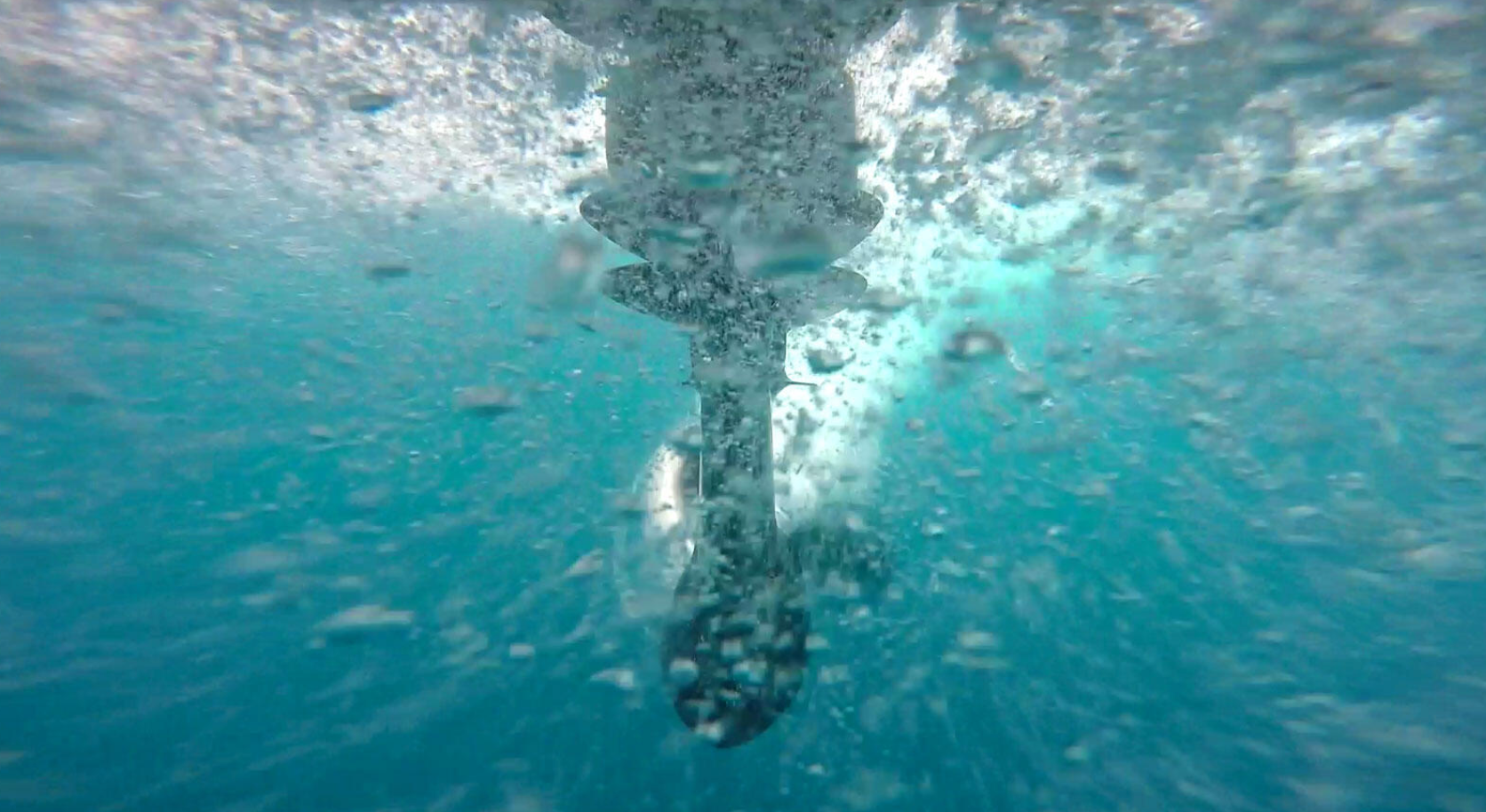The Relationship of Torque, Thrust and Gear Ratio

By Thomas P.—e-Ribbing.com
On a rigid-hulled-inflatable (RIB), the torque that is produced by an outboard engine is converted to thrust by the combined effect of the gear ratio and propeller. Physics teaches us that the torque is proportional to the horsepower (hp) and inversely proportional to the rotation speed (rpm). Thus, the higher the horsepower or the lower the propshaft rpm, the greater the torque that is produced.
As the torque at the propeller shaft increases, a larger-diameter propeller can be used.
As the gear ratio of an outboard engine gets higher (numerically), the propeller shaft rotates more slowly. So if greater torque is applied, a larger diameter propeller can be rotated.
On the other hand, we know that a larger diameter propeller pushes more water aft. This generates more thrust and propulsion.

Combining all the above parameters (gear ratio-torque-thrust), we conclude that as much as the lower-unit gear ratio increases numerically (at the same horsepower) the greater the torque at the propeller shaft gets. This means a larger-diameter propeller can be turned and greater thrust will be produced. So we can accept that the gear ratio of an outboard engine acts as a regulator of torque and thrust.
So then why aren’t all outboard engines installed with quite high (numerically) gear ratios so they can turn a larger-diameter propeller and achieve a tremendous amount of thrust?
The Answer is as Follows:
- The use of higher-pitch propellers would not be possible because the applied load for the engine would be too much. We would be forced to use lower pitch propellers and the final achieved speeds would be disappointing.
- The reduction gear would be huge and the size of lower unit would be too big to accommodate.
- Large-diameter propellers and oversized lower units create a tremendous drag that is inversely proportional to the speed.
Therefore, because the diameter and pitch of a propeller work together, manufacturers install proportionate gear ratios that enable the most efficient combination of diameter and pitch. This produces the best combination of thrust.